3 Primary Colors - Or Four?
3 primary colors ...
![]()
Yellow, Blue, Red
... are known as the building blocks of all colors on the color wheel chart. At least that's how we learned it in school: red, blue and yellow are "the" three primary colors. BUT ...
... that's just one way to mix colors. The color & paint industries, for example, use four primary colors, not three!
In fact, there are loads of different color models. Artists, scientists and philosophers have passionately fought over them for hundreds of years. But let's start with the 3-primary color mixing wheel:
3-Primary Color Mixing Wheel
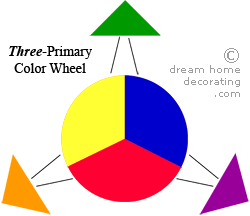
The 3-primary color wheel goes back to J.W. von Goethe (1749-1832), even though the idea of 3 primary colors is older than Goethe's work.
This color model was developed mainly by painters, for painters, so it's all about mixing paint.
You can download it FREE here or buy it here.
Definition Of Three Primary Colors:
In Goethe's color mixing wheel, the 3 primary colors are the paint colors you can't produce by mixing, but which can mix all other colors.
These primaries are to painting what the prime numbers are to mathematics: you just can't divide them any further into smaller (whole) numbers.
The illustration above shows how you mix the secondary colors from the 3 primary colors:
- blue+yellow=green,
- yellow+red=orange,
- blue+red=violet.
In theory, these secondary colors should be clear and luminous. But they rarely are, when you mix real paints.
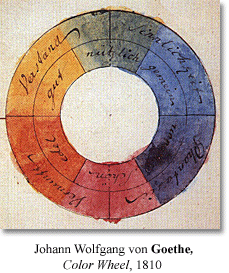
Instead, some red-plus-blues come out as lifeless, flat grey-purples, and some blue-plus-yellows end up as really murky greenish-browns.
The result of mixing primary colors depends entirely on how the pigments work together.
Still, at least the 3-primary color wheel explains how the world of paint color hangs together, so it is a useful tool. (Click the link to read more about
complementary, secondary and tertiary colors on the three-primary color mixing wheel.)
Should There Be More Primary Colors?
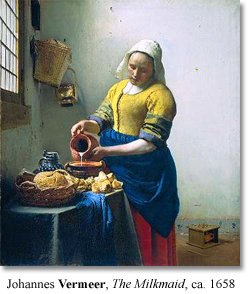
Sir Isaac Newton (1642-1726) was the first scientist to represent the colors of light on a "wheel" model.
Newton identified seven (!!) primary colors (that was after he had considered first 5, then 11): Red, orange, yellow, green, blue ('blew'), indigo and violet.
But if you stop anyone in the street and ask them 'what are the primary colors?', no one's going to say, 'Well, Newton said ..." rather, you'll hear something like
- "What the ¿#%*¾Ψ? " or
- "red, yellow, blue", or
- "red, yellow, blue and green".
Who is right?

Imagine what any of these logos would look like without the green. Would you find they look 'complete'?
On the other hand, how do we know if green really is a primary color? And would a four-primary color wheel show how to mix primary colors correctly?
4-Primary Color Template
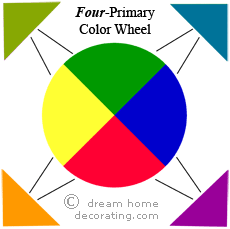
The four-primary color chart is not about mixing primary colors as paints, it is about how our eyes and brains work. That's a different approach from the 3-primary color mixing wheel. Physiologist Ewald Hering (1834-1918) called red, yellow, blue and green the "psychological primaries".
He pointed to Leonardo da Vinci (1452-1519), who had already identified these colors as the basic set of 'simple' colors. (Both men added black and white to their primary color charts.)
Hering was able to show that we physically see these primary colors as opposing pairs (he did not call them 'complementaries'):
- red and green
- blue and yellow
- black and white
But How Is This Not A Color Mixing Wheel?
(You Can Mix The Colors!)
Yes, you can mix the four psychological primaries, but you'll end up with a different set of secondary colors (see the illustration above left): Lime green (yellow+green) and turquoise (blue+green) would be tertiary colors on the three-primary color wheel.
This throws the 'old order' of complementary colors out of whack:
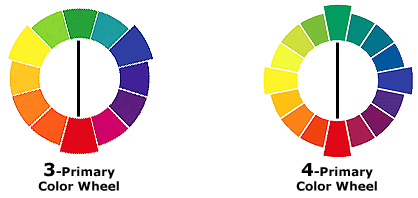
Only red and green remain in their old position - all the other colors on the outer ring of the models face different, new opponents. And on the 4-primary color wheel, we get some lovely "eye candy" combinations! How about, for example ...
- yellow-orange + greenish blue?
- lime green + deep purple?
- plum + lemon?

Fine, you'll say, but where does all this leave us? Is one primary color wheel "better" than the other?
Not at all.
Each of the primary color wheel templates is simply the result of a different question.
- The 3-primary color mixing wheel tells us how to mix 3 primary colors as paints, and
- the 4-primary color chart shows how we see color.
Both color wheels produce different primary, secondary and 'tertiary' color combinations that can give us attractive color schemes.
And there's really no need to fear the color wheel police when you're decorating your home. The 3-primary color wheel is based on the deeply entrenched dogma that there are only 3 primary colors. But that dogma is now hundreds of years old, and it does not represent the 'truth' about color. It's just a convention.
I say, forget conventions, relax, and go for the eye candy.
Click A Pic For More Info:
If You Would Like To Buy A Color Wheel Chart ...
... welcome to my online Color Wheel Shop (in partnership with Amazon).
Take your pick:
Yet to find the information you're looking for? Type a word or phrase into the search box below:
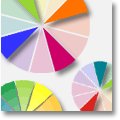
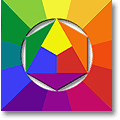
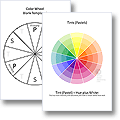
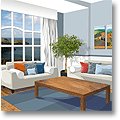

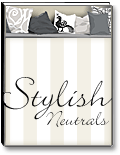
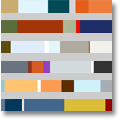
New! Comments
Have your say about what you just read! Leave me a comment in the box below.